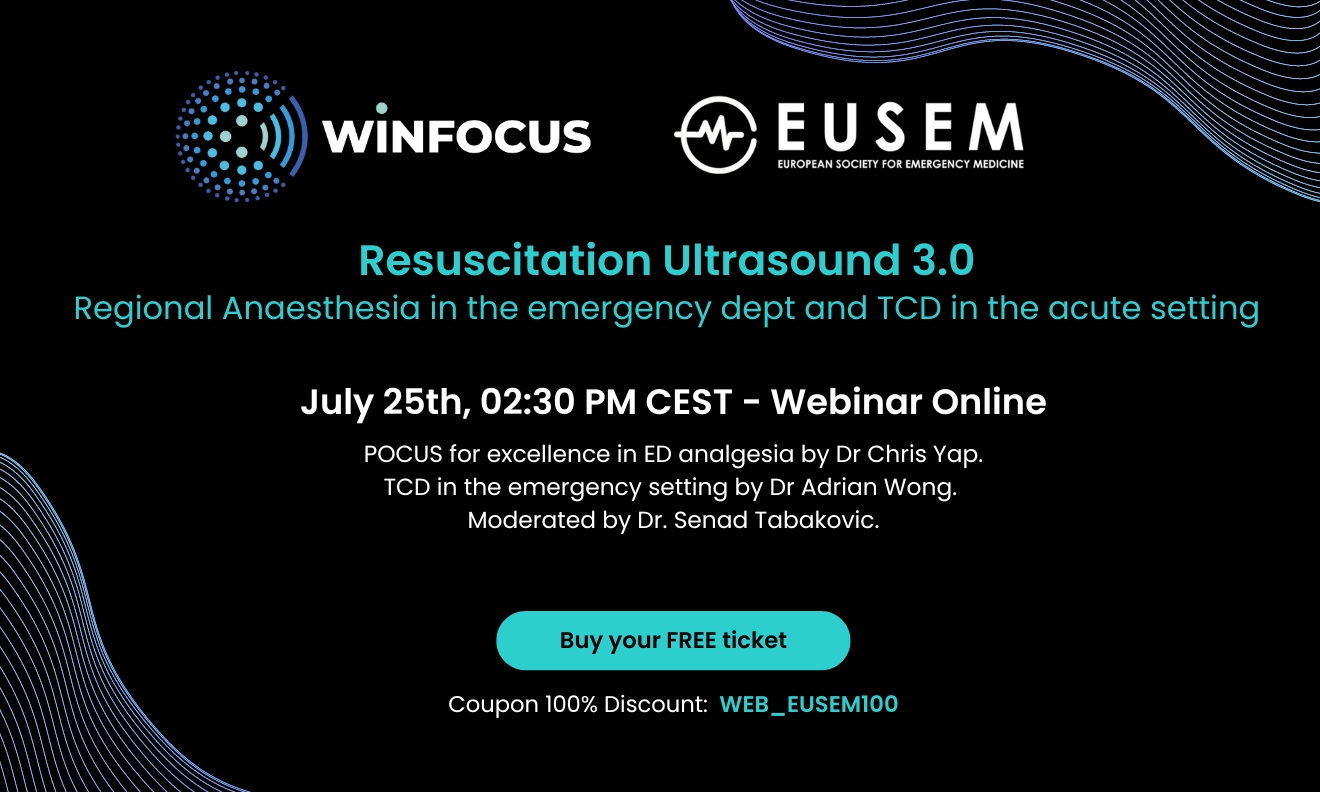WEBINAR: Resuscitation Ultrasound 3.0 - 25 July
Regional Anaesthesia in the emergency dept and TCD in the acute setting
In this joint webinar with colleagues in the European Society of Emergency Medicine, we highlight the latest developments in the use of ultrasound in the emergency setting.
From its origin in trauma management with the FAST scan, the ultrasound has evolved to an indispensable tool in the diagnosis and resuscitation of the acutely ill patient.
In this webinar, we discuss two modalities of ultrasound which are potentially less well utilised and established.
Firstly, Ultrasound-guided regional anaesthesia is now part and parcel of modern anaesthetic techniques. Does it have a role in the hands of the ED physician?
Secondly, transcranial doppler has been recommended as a core skill for the general intensivists and neurologists? What is its role in the ED? Should it be the norm?
POCUS for excellence in ED analgesia by Chris Yap
We will explore the benefits and challenges of performing ultrasound guided analgesia and blocks for patients who present with trauma. Questions we hope cover include: How does one acquire the skill? Who should perform the block? When should you do it? How do you provide quality assurance? What next?
TCD in the emergency setting by Adrian Wong
Transcranial Doppler (TCD) is a non-invasive ultrasound technique used in the emergency setting to evaluate cerebral blood flow.
In the emergency department, it has particularly use in:
1. Assessing Intracranial Pressure (ICP): Indirectly estimates ICP by analyzing flow patterns and velocities in the cerebral arteries.
2. Identifying Emboli: Detects microembolic signals in conditions like stroke, especially in evaluating patients with suspected right-to-left shunts.
3. Monitoring Cerebral Blood Flow: Provides real-time monitoring of cerebral hemodynamics in head injury, stroke, and other critical conditions.
4. Guiding Treatment: Helps guide therapeutic decisions, such as determining the adequacy of cerebral perfusion during resuscitation and guiding interventions in patients with traumatic brain injury.
Overall, TCD is a valuable tool in the emergency setting due to its portability, real-time capabilities, and ability to provide critical information about cerebral circulation without exposing patients to radiation or requiring contrast agents.
As a member of EUSEM, you have a 100% discount coupon:
WEB_EUSEM100
|
|


